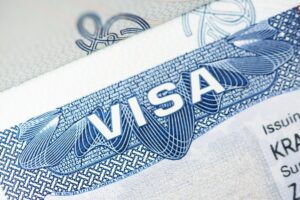Introduction to Adjustment of Status
Adjustment of Status (AOS) is a pivotal process for foreign nationals residing in the United States who aim to acquire lawful permanent resident status, commonly referred to as obtaining a Green Card. This procedure is vital for those who wish to transition from a temporary, non-immigrant status to permanent residency without the necessity of leaving the U.S. to complete the process.
Eligibility Criteria for Adjustment of Status
To be eligible for AOS, certain criteria must be met:
- Eligibility for the Green Card Type: The applicant must qualify for the specific category of Green Card they are applying for.
- Physical Presence in the U.S.: The applicant must be physically present in the U.S. and have entered the country with a valid visa.
- Lawful Immigration Status: The applicant must currently be in lawful immigration status.
- Approved Visa Petition: Possession of an approved I-130 (for family-based petitions) or I-140 (for employment-based petitions) is necessary unless filing a concurrent application.
- Current Priority Date: For those in preference categories, the priority date must be current, meaning a visa number is available.
- Special Cases: Special provisions apply to K-1 visa holders, asylees, refugees, and those eligible under Section 245(i) of the Immigration and Nationality Act (INA).
Non-Eligibility for Adjustment of Status
Certain conditions render an individual ineligible for AOS:
- Absence from the U.S.
- Current invalid immigration status.
- Unlawful entry into the U.S.
- Failure to marry within the validity period on a K-1 fiancé visa.
- Undergoing deportation proceedings.
- Entry under the Visa Waiver Program or as a transit without a visa.
Adjustment of Status Application Process
The AOS application involves several critical steps:
- Filing of Visa Petition: A Green Card sponsor files Form I-130 or, in employment-based cases, Form I-140. Concurrent filing of I-130 and I-485 is an option for certain categories without visa quotas.
- Submission of Form I-485: After approval of the visa petition, the applicant files Form I-485, the official application for adjustment of status. Availability of a visa number is a prerequisite for this step.
- Biometrics Appointment: USCIS schedules a biometrics appointment for the applicant to provide fingerprints, photos, and a signature for background checks.
- Green Card Interview: An interview may be conducted at a local USCIS office where the applicant’s information and documents are thoroughly reviewed.
- USCIS Decision: Following the interview, USCIS will either approve or deny the Green Card application.
Post-Application Considerations
- Denied Applications: If USCIS denies the application, the individual loses lawful immigration status and work permit validity. It is advised to promptly leave the U.S. to avoid unlawful presence accrual.
- Case Tracking: Applicants can monitor their case status through the USCIS online case tracker using their receipt number.
Frequently Asked Questions
- Form I-485 Processing Time: The time taken by USCIS to process Form I-485 ranges from seven months to six years, depending on the Green Card category and the completeness and accuracy of the application.
- Cost of Applying for Form I-485: The cost is typically $1,225 for applicants aged 14-78, including a biometric fee. Fee waivers and different fee structures are available for certain applicants.
- Travel During Application Processing: Travel is possible with Advance Parole, a permit allowing travel abroad without abandoning the application.
- Working During the Process: Applicants can work if they possess a valid Employment Authorization Document (EAD), obtained by filing Form I-765 along with the adjustment application.
Conclusion
The Adjustment of Status process is a critical pathway for non-immigrants in the U.S. to transition to permanent residency. Understanding the eligibility requirements, the step-by-step procedure, and post-application considerations is essential for a successful application.





